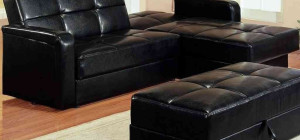 The possibility of rainwater getting into your house is high due to the gaps in your home’s interior. This incident is both irritating and dangerous to your property.
The possibility of rainwater getting into your house is high due to the gaps in your home’s interior. This incident is both irritating and dangerous to your property.
The infiltration of rainwater and snow is often prevented with different forms of sealing but the sealing may have started to deteriorate over time. The good thing is that it isn’t too difficult or costly to replace or add sealing features to your doors and windows.
There are several ways to make sure that water and air never leak around or behind a door or window. New products and techniques boost quality and productivity as construction technology progresses.
Builders utilized tar paper hundreds of years ago to cover the exterior wood walls of homes to help prevent the wood from rotting due to water.
They became very innovative in overlapping the tar paper above the doors and windows to build an effective waterproof shield.
How can you make doors and windows waterproof?
Many regions in the world often get significant quantities of rainfall and snowfall.
Here are four effective tips on how you can waterproof your doors and windows:
Attach Roman blinds
Windows can become a significant source of heat loss during the winter and can let water enter your home. Having said this, using shades and heavy blinds that provide optimum insulation to sustain warm air and block cold air are recommended.
Roman blinds work well in keeping your home secured amid harsh weather. Lift them during the day to welcome heat while the sun is out and lower them to secure the warm air inside at night.
Pair your Roman blinds with blackout liner for light reduction, privacy, and insulation.
Integrate Nailing Fin
Integrating nailing fins or flanges on patio and entry doors is becoming more popular.
Almost every new modern door and windows come with a built-in nailing fin. These fins are part of a channel that gathers and divert water around the door or window.
If you seal this fin to the waterproof exterior surface enclosing the oriented strand board, you can push water to the ground. Doing this also allows you to stop water from entering your house.
Examine the Seal Gaps
Place a white paper between the door’s bottom and the threshold, shut the door, then slowly take the paper out. Examine the amount of debris to determine how tight the seal is. Apply chalk on both sides to prevent water from infiltrating.
Repair Weather Stripping
Inspect the weather stripping on all sides of the exterior doors. If you need to repair weather stripping that’s old or damaged, you have to remove the old weather stripping first.
Determine the weather stripping style you need and follow the installation instructions from the manufacturer.
Beginning at the bottom, gradually work your way up the door frame and ensure that the foam sticks equally into the corner formed by the door stop and door frame. Using a putty knife to help insert the foam strip tightly into the corner seam is a good idea.
Cut off the excess parts and press the end tightly into the corner once you’ve reached the above portion.
To Conclude
Most waterproofing and air-sealing tips automatically jump to weather stripping as a fast fix for every leakage. Home and building owners, however, should need a more detailed strategy for an existing structure with plenty of weatherproofing problems.
Rain and snow can get inside your residence through badly fitted windows or doors, particularly if an extreme wind is storming against your home.
Aside from preventing water from entering your house, sealing windows and doors also improve the thermal features of your residence.







